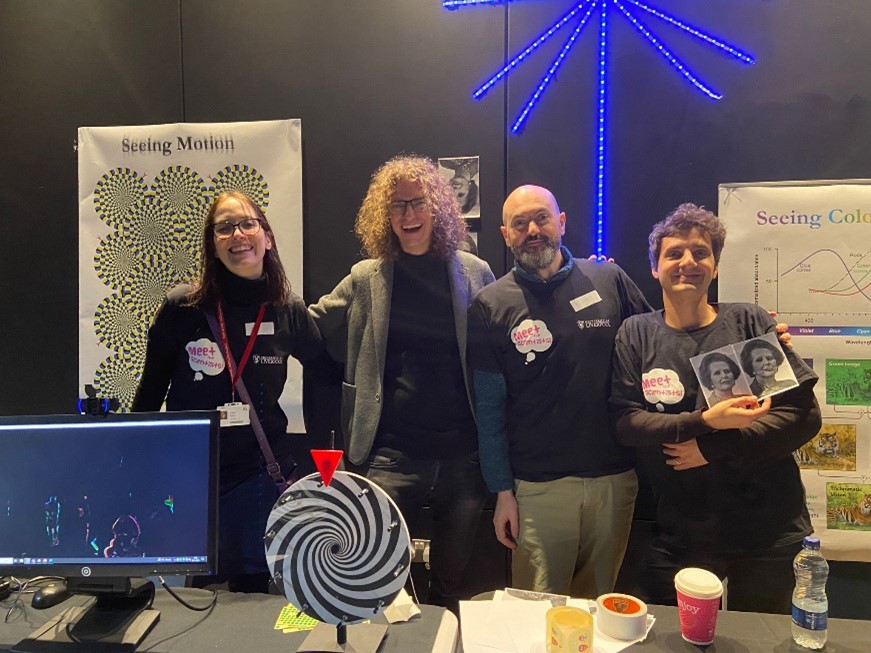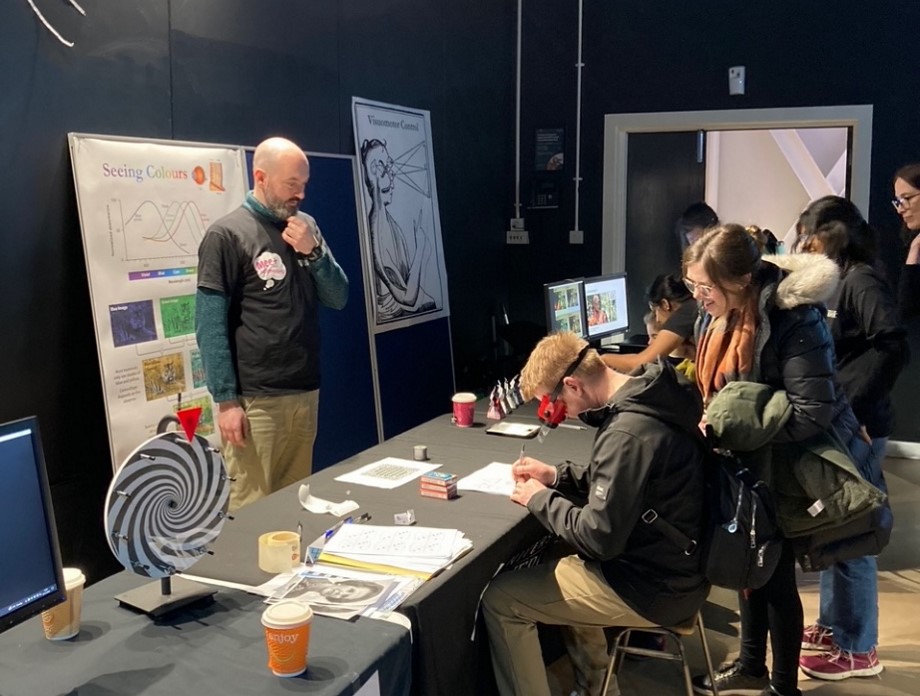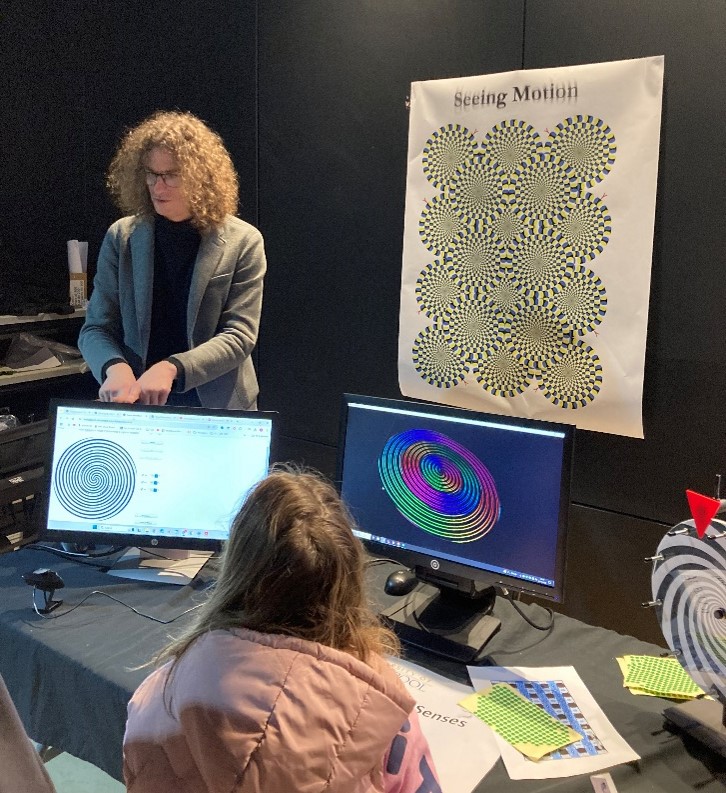
The final Meet the Scientists of 2024 was held at Eureka Science + Discovery. A team from the Department of Psychology's delighted visitors with a 'Trick Your Senses' stand. Volunteers included Drs Cesare Parise, Irene Senna, Angelo Pirrone, Emmanuel Biau, and Francesca Branzi.
This year again, the Department of Psychology could not miss 'Meet the Scientists' and came back with a new set of visual illusions to challenge the brains of the visitors! The 2024 edition took place on Saturday 23 November and was hosted by the fantastic Eureka! Science + Discovery in the Wirral.
As good scientists, we arrived with no less than four computers and screens, giant posters, and double the amount of “easy-to-lose” items to conduct experiments with children and their parents. With Melissa from the Faculty Public Engagement team and the Eureka tech team helping, we managed to install our stand in no time, ready to share knowledge and experiments with the little ones. For this edition, our team focused on the visual sense, and prepared a few experiments capturing the volatile audience’s attention with a series of visual tricks such as the 3D Mirascope, cut-out and fold paper characters creating illusion of depth, and a variety of visual illusions and op-art. Perhaps the most successful activities of our stand turned to be:
- The upside-down goggles
- The computerised motion detection demo
- The size weight illusion.
In the flipping-world activity, participants wore special goggles with prismatic lenses that literally flipped their vision to experience an “upside down” world sensation. Once familiarised, the children - and adults as well – were challenged to draw over simple shapes such as a star or a circle on a piece of paper with a pen. Through this activity, participants experienced how predominant vision is in human orientation and accomplishing simple actions like drawing or looking at someone.

Cesare also conducted an impressive demonstration combining a webcam with custom-built software detecting movements in real-time, displaying the colourful results on a screen. As part of this interactive demo, attendees could get a sense of how the brains sees motion in real time, and the role of eye movements on the perception of motion and related illusions. In a particularly engaging demo, they experienced first-hand how animals like zebras can hack predators motion vision, using it against the predator to make it hard for them to single-out individual animals in the herd.

In parallel, we also ran an activity depicting the colour ranges of animals’ vision to discuss the principle of camouflage in wildlife. For instance, we explained why some patterns on the animals’ skin might seem “flashy” to the human eye, but are an efficient way to hide from predators in the savanna (or the other way around!). Along with the motion perception demo, this activity offered a glimpse on computational neuroscience, and how complex perceptual skills can be readily simulated on a personal computer.
Finally, with the size-weight illusion, attendees could experience a fascinating phenomenon where smaller objects feel heavier than larger ones, even if they weigh exactly the same. This happens because our brains use expectations based on an object’s size to predict its weight. In our activity, participants first lifted a single heavy card box, right after, they lifted the same box plus two empty ones. To their surprise the 3 boxes appeared much lighted than the single box!
Despite a combination of rain and wind, the event attracted a massive number of families, with parents being often as enthusiastic as their children to know more about vision through illusions. We literally went through the whole day without taking any real break with the uninterrupted flow of curious little scientists, only to sneak away from time to time to get a coffee. As the doors closed at 4pm, we packed up our stand, leaving the Eureka! Science + Discovery centre with no energy, but the joy to imagine that today, we maybe met a few of our new colleagues in the next twenty years!
This edition of 'Meet the Scientists' has been another success evidenced by the number of stands and the lovely people from the other Departments. The public engaged a lot in all the activities on offer. We want to thank the Faculty Public Engagement and the people acting behind the scenes for accomplishing a new tour-de-force in organising such a great event for families and scientists, and for reminding us that research matters beyond academia. We will definitely come back next year!